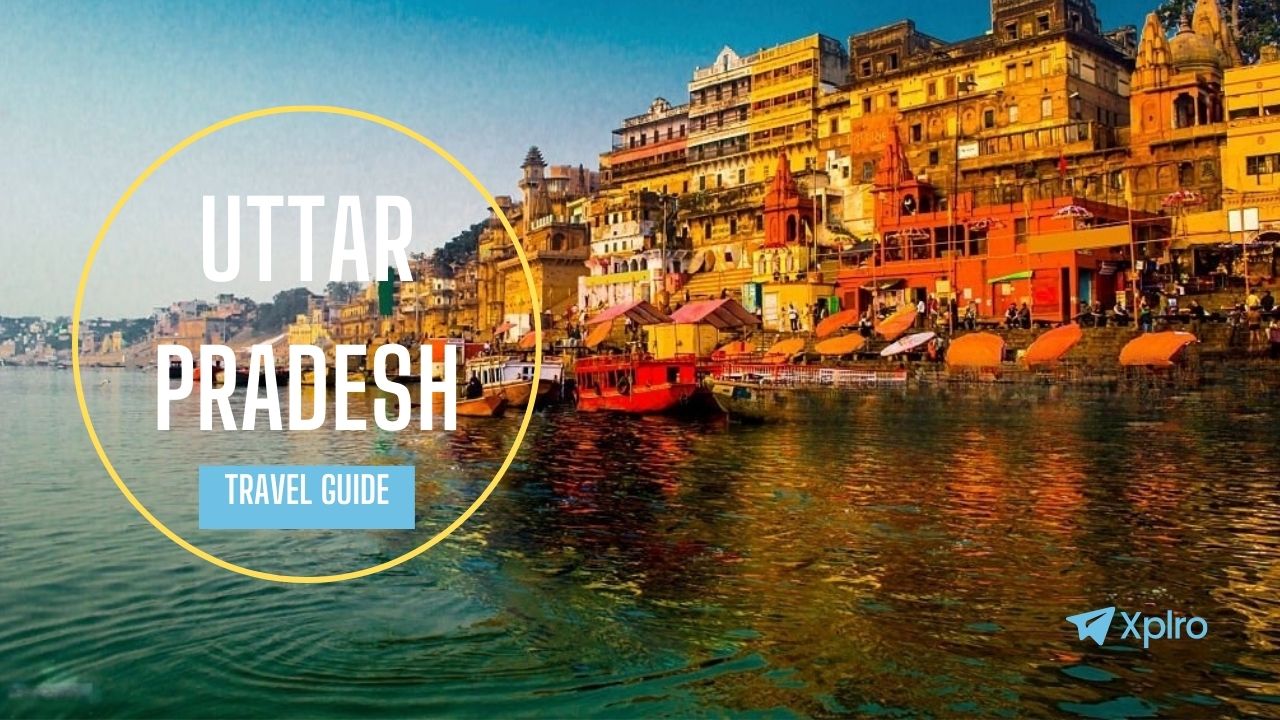UTTAR PRADESH TRAVEL GUIDE: Imagine the first rays of dawn casting a golden hue on the sacred ghats of Varanasi, echoing with soul-stirring chants. Envision getting lost in the charming alleys of Lucknow, savoring the exquisite Awadhi flavors that melt in your mouth. Now, picture standing in awe before the timeless beauty of the Taj Mahal, its pristine white marble reflecting the ethereal blues of the sky. Welcome to Uttar Pradesh, not just a state but an immersive experience. Here, history whispers through ancient cities, spirituality permeates the air, and vibrant life pulses through bustling streets.
Situated in the heart of North India, Uttar Pradesh is a tapestry of ancient echoes, devotional resonances, and diverse landscapes, ranging from the snow-capped peaks of the Himalayas to the lush Terai grasslands. Whether you’re a lone explorer, a family in search of wonders, or a group of friends seeking historical thrills, Uttar Pradesh promises an unforgettable journey.
How to Reach Uttar Pradesh:
Uttar Pradesh, the most populous state in India, boasts a well-developed transportation network, making it easily accessible from various parts of the country. Here’s a breakdown of the different ways you can reach Uttar Pradesh:
By Air:
- Convenience and Speed: Flying is the quickest and most convenient way to reach Uttar Pradesh, especially for long distances. The state has four domestic airports:
- Chaudhary Charan Singh International Airport (Lucknow): The largest airport in Uttar Pradesh, offering connections to major Indian cities and international destinations.
- Lal Bahadur Shastri International Airport (Varanasi): Connects Varanasi, a major pilgrimage center, to various domestic destinations.
- Agra Airport (Kheria): Provides domestic connectivity to Agra, the home of the Taj Mahal.
- Kanpur Airport (Chakeri): Offers limited domestic flights to some Indian cities.
- Booking Flights: Numerous airlines operate flights to Uttar Pradesh. Search and compare prices online or through travel agents to find the best deals.
By Train:
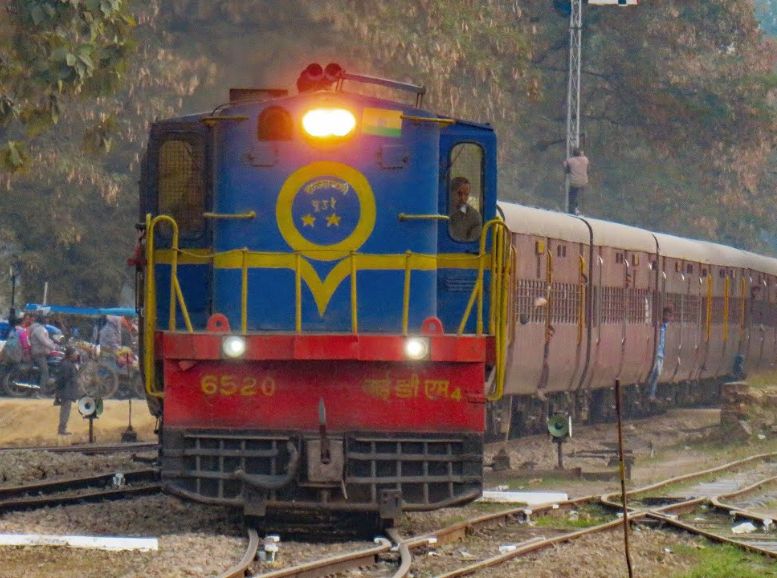
- Experience and Affordability: The Indian railway network is extensive and connects most major cities in India to Uttar Pradesh. Trains offer a comfortable and affordable way to travel, allowing you to witness the diverse landscapes of India.
- Popular Routes: Several popular train routes connect various cities to Uttar Pradesh, including:
- Delhi to Lucknow, Agra, Varanasi, and Kanpur
- Mumbai to Lucknow and Varanasi
- Kolkata to Lucknow and Varanasi
- Chennai to Lucknow and Varanasi
- Booking Tickets: Book your train tickets online through IRCTC (Indian Railway Catering and Tourism Corporation) website or at railway stations in advance, especially during peak season.
By Road:
- Flexibility and Adventure: Traveling by road offers flexibility and allows you to stop at various destinations along the way. Uttar Pradesh has a well-developed network of national highways and state roads.
- Bus Services: Numerous government and private bus services connect Uttar Pradesh to other states. Consider booking your tickets in advance, especially during festivals or peak season.
- Self-Drive: If you’re up for an adventure, consider renting a car and exploring Uttar Pradesh at your own pace. Ensure you have a valid driver’s license and are comfortable navigating unfamiliar roads.
Best Time to Visit to Uttar Pradesh:
The ideal time for your trip depends on your preferences and tolerance for various weather conditions. Here’s a breakdown to help you choose:
Pleasant Weather and Peak Season (October – March):
- Pros: This period boasts comfortable temperatures, ranging from 8°C to 24°C, perfect for sightseeing and outdoor activities. It coincides with major festivals like Diwali and Holi, offering a chance to experience vibrant cultural celebrations.
- Cons: This is the peak tourist season, leading to higher prices and larger crowds at popular destinations.
Shoulder Season (April – June):
- Pros: The crowds start to thin out, and you might find better deals on hotels and flights. The weather remains relatively warm, though temperatures can occasionally reach scorching highs.
- Cons: The heat can be uncomfortable for some, especially during the later part of June.
Monsoon Season (July – September):
- Pros: Lush greenery and scenic waterfalls grace the landscape during the monsoon. You’ll encounter the fewest crowds and potentially the most affordable travel options.
- Cons: Heavy rainfall can disrupt travel plans and outdoor activities. Humidity levels are high, and some historical sites might have limited accessibility due to slippery pathways.
Choosing the Right Time to Visit Uttar Pradesh:
- For comfortable weather and vibrant cultural experiences: October to March is ideal.
- For smaller crowds and potentially better deals: April and May are good options.
- For lush greenery and the lowest tourist numbers: You can brave the monsoon (July – September), but be prepared for potential travel disruptions due to rain.
Must-See Attractions:
Taj Mahal:

The Taj Mahal, one of the most iconic symbols of love and architectural marvels in the world, stands as a testament to the eternal love of Emperor Shah Jahan for his beloved wife, Mumtaz Mahal. Located in Agra, India, this UNESCO World Heritage Site captivates visitors with its exquisite beauty and intricate craftsmanship. Built over two decades by thousands of skilled artisans, the Taj Mahal is a masterpiece of Mughal architecture, featuring a stunning white marble mausoleum adorned with intricate carvings, inlaid semi-precious stones, and symmetrical gardens. Its majestic dome and minarets reflect gracefully in the tranquil waters of the reflecting pool, creating a breathtaking sight that mesmerizes millions of visitors from around the globe every year.
Fatehpur Sikri:
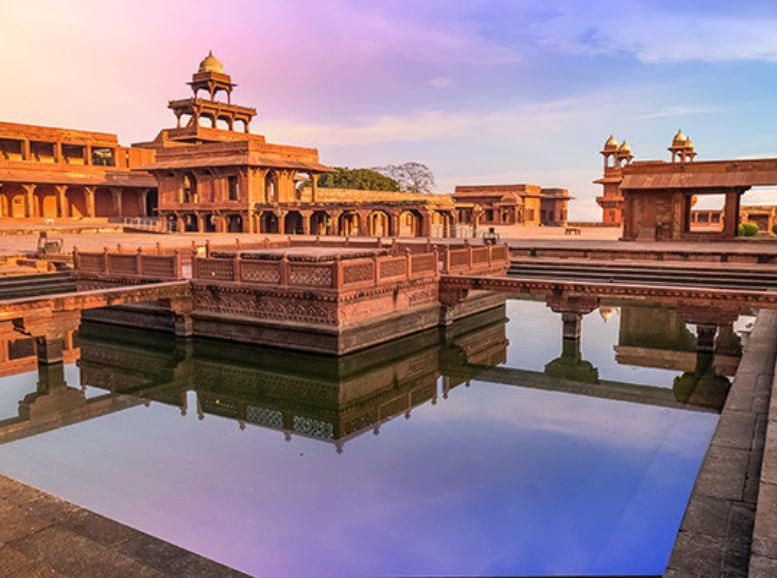
Fatehpur Sikri, a UNESCO World Heritage Site situated near Agra in the state of Uttar Pradesh, India, stands as a remarkable architectural marvel and a testament to the grandeur of the Mughal Empire during the 16th century. Built by Emperor Akbar in the late 16th century, Fatehpur Sikri served as the capital of the Mughal Empire for a brief period before being abandoned due to water scarcity. The city is renowned for its splendid palaces, mosques, and courtyards, all constructed from red sandstone, showcasing a fusion of Persian, Islamic, and Indian architectural styles. The most famous landmarks within Fatehpur Sikri include the Buland Darwaza.
Varanasi Ghats:

Varanasi, one of the oldest continuously inhabited cities in the world, is renowned for its mesmerizing ghats lining the sacred Ganges River. These ghats serve as the heart and soul of Varanasi’s spiritual and cultural life, where devotees and pilgrims gather to perform ritual ablutions, prayers, and cremations. Each ghat holds its own significance, with Dashashwamedh Ghat being the most famous, known for its daily Ganga Aarti ceremony, a captivating spectacle of light, music, and devotion. The serene Assi Ghat attracts seekers and yoga enthusiasts, offering a tranquil ambiance for meditation and contemplation.
Ayodhya:
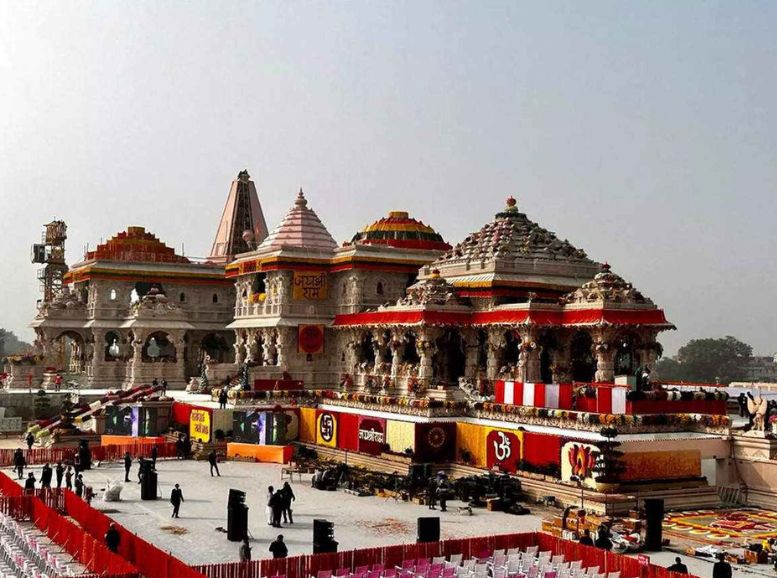
Ayodhya, situated in the northern Indian state of Uttar Pradesh, is renowned for its rich historical and religious significance. This ancient city is steeped in mythology and revered by Hindus as the birthplace of Lord Rama, a major deity in Hinduism. The city is adorned with numerous temples, the most prominent being the Ram Janmabhoomi Temple, built at the spot believed to be the birthplace of Lord Rama. Visitors can explore the vibrant streets lined with colorful stalls selling religious artifacts, souvenirs, and traditional delicacies. The serene banks of the Sarayu River offer a tranquil retreat, where one can partake in spiritual rituals or simply unwind amidst the picturesque surroundings. Ayodhya’s charm lies not only in its religious significance but also in its architectural marvels, reflecting centuries of cultural heritage. From the grandeur of ancient temples to the tranquility of its natural landscapes, Ayodhya captivates travelers with its timeless allure.
Mathura:
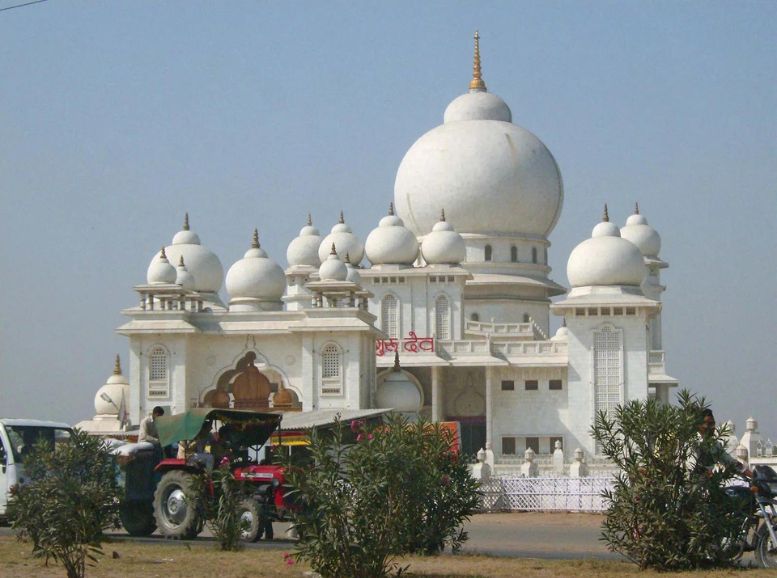
Mathura, located in the state of Uttar Pradesh, India, is a city steeped in history and spirituality. Renowned as the birthplace of Lord Krishna, one of the most revered gods in Hinduism, Mathura is a significant pilgrimage site for devotees from all over the world. The city is dotted with magnificent temples dedicated to Lord Krishna, including the Sri Krishna Janmabhoomi Temple, built at the exact spot believed to be his birthplace. The vibrant streets of Mathura bustle with activity, offering a glimpse into the rich culture and traditions of India. Visitors can explore the bustling markets, filled with colorful handicrafts, religious artifacts, and delectable street food. The banks of the sacred Yamuna River provide a serene backdrop for spiritual rituals and contemplation. With its ancient temples, sacred sites, and vibrant atmosphere, Mathura continues to enchant visitors with its timeless charm and profound spiritual significance.
Vrindavan:
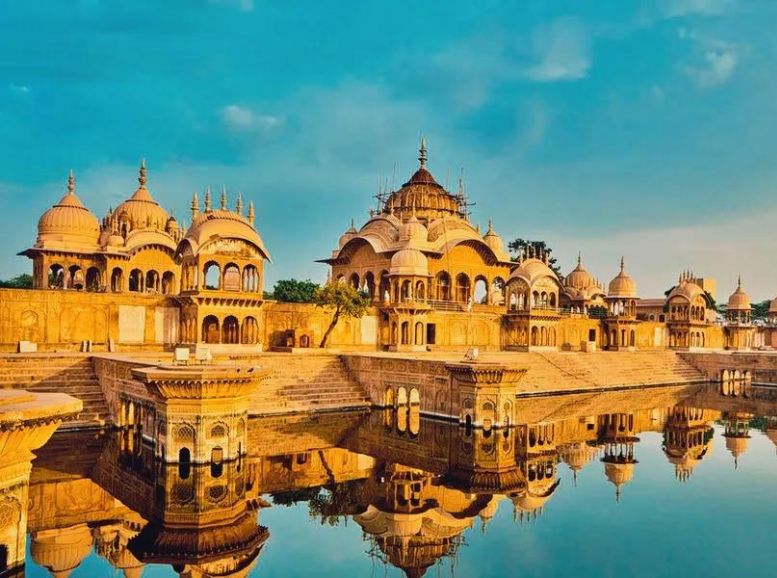
Mathura, nestled in the heart of Uttar Pradesh, India, is a city of profound spiritual importance and rich historical heritage. Revered as the birthplace of Lord Krishna, an incarnation of the Hindu god Vishnu, Mathura holds a special place in the hearts of millions of devotees worldwide. The city is adorned with magnificent temples and sacred sites, each narrating stories of Krishna’s divine play and teachings. The Sri Krishna Janmabhoomi Temple stands as a testament to the city’s spiritual significance, drawing pilgrims and tourists alike to its hallowed grounds. Beyond its religious allure, Mathura’s streets resonate with the vibrant colors and rhythms of Indian culture. Bustling markets offer an array of handicrafts, sweets, and souvenirs, while the tranquil banks of the Yamuna River provide a serene space for contemplation and prayer. With its blend of spirituality, history, and cultural vibrancy, Mathura beckons visitors to immerse themselves in its timeless aura and embrace the divine essence of Lord Krishna’s abode.
Vindhyachal:
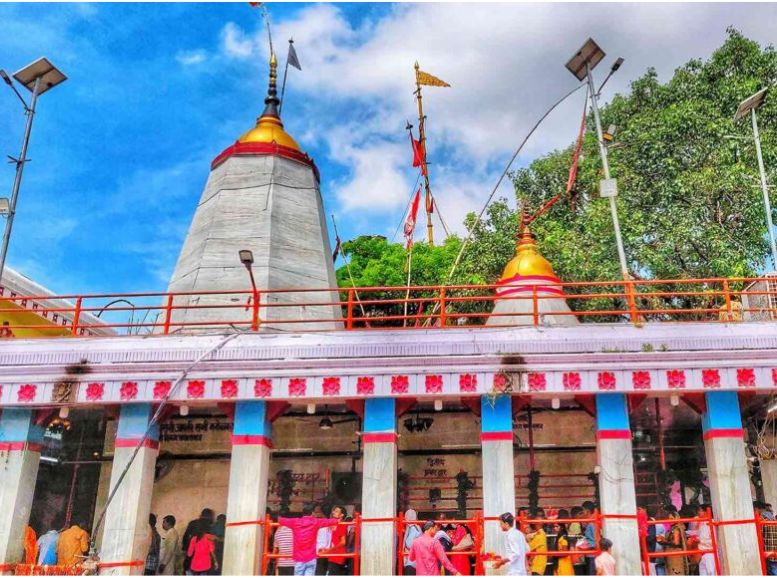
Vindhyachal, nestled amidst the Vindhya mountain range in the Indian state of Uttar Pradesh, is a sacred destination revered by Hindus for its profound spiritual significance. The town is renowned for the Vindhyavasini Devi Temple, dedicated to Goddess Vindhyavasini, an incarnation of the Hindu goddess Durga. Pilgrims flock to this temple to seek blessings and offer prayers, especially during the auspicious Navratri festival when the entire town comes alive with devotion and festivities. The surroundings of Vindhyachal are blessed with natural beauty, with the majestic Ganges River flowing nearby, adding to the spiritual ambiance of the place. Apart from the temple, visitors can explore the serene ghats along the river, soak in the tranquil atmosphere, and revel in the breathtaking views of the surrounding hills. Vindhyachal is not just a religious site but also a haven for those seeking solace amidst nature’s bounty, making it a must-visit destination for spiritual seekers and nature enthusiasts alike.
Ambedkar Park Lucknow:

Ambedkar Park, located in Lucknow, Uttar Pradesh, is a sprawling memorial dedicated to Dr. Bhimrao Ramji Ambedkar, the architect of the Indian Constitution and a champion of social justice and equality. This magnificent park, also known as Dr. Bhimrao Ambedkar Samajik Parivartan Sthal, spans across acres of lush greenery and features striking architectural elements that pay homage to Dr. Ambedkar’s legacy. The centerpiece of the park is the grand statue of Dr. Ambedkar seated in a thoughtful pose, surrounded by beautiful gardens, fountains, and pathways.
Lucknow Residency (Lucknow):
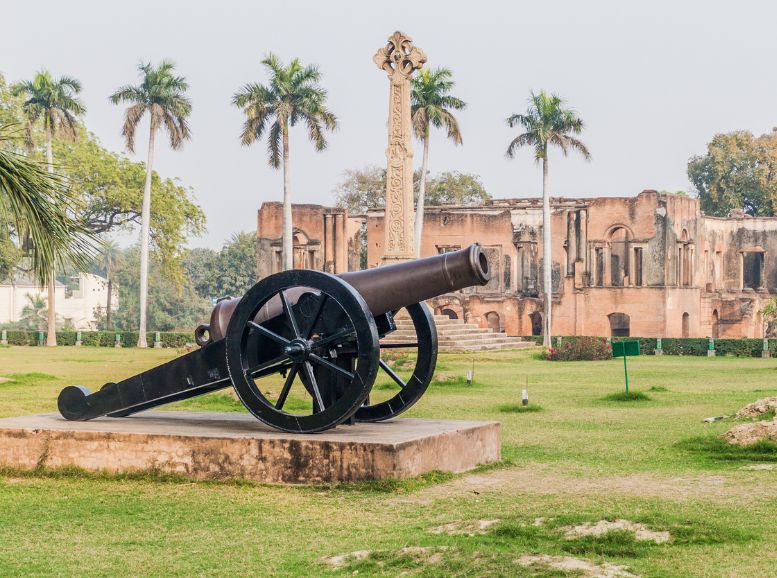
The Lucknow Residency stands as a poignant reminder of the tumultuous events of India’s struggle for independence, particularly during the Indian Rebellion of 1857. This historic complex served as the residence of the British Resident General and witnessed intense battles and sieges during the uprising. Today, the Lucknow Residency stands as a solemn memorial and museum, preserving the memories of sacrifice and valor displayed by both Indian and British soldiers, while offering visitors a glimpse into the resilience of the human spirit amidst the echoes of history.
Kushinagar:

Kushinagar, located in the Kushinagar district of Uttar Pradesh, India, holds immense significance as one of the most sacred Buddhist pilgrimage sites. It is renowned as the place where Lord Buddha attained Mahaparinirvana, or final enlightenment, and passed away. Surrounded by tranquil countryside, Kushinagar exudes a serene atmosphere, conducive to contemplation and spiritual reflection. The Mahaparinirvana Temple, built to commemorate this event, houses a magnificent reclining statue of Lord Buddha in his final moments. Additionally, the Ramabhar Stupa, a massive brick structure marking the cremation site of Lord Buddha, stands as a symbol of reverence and devotion.
Rumi Darwaza (Lucknow):
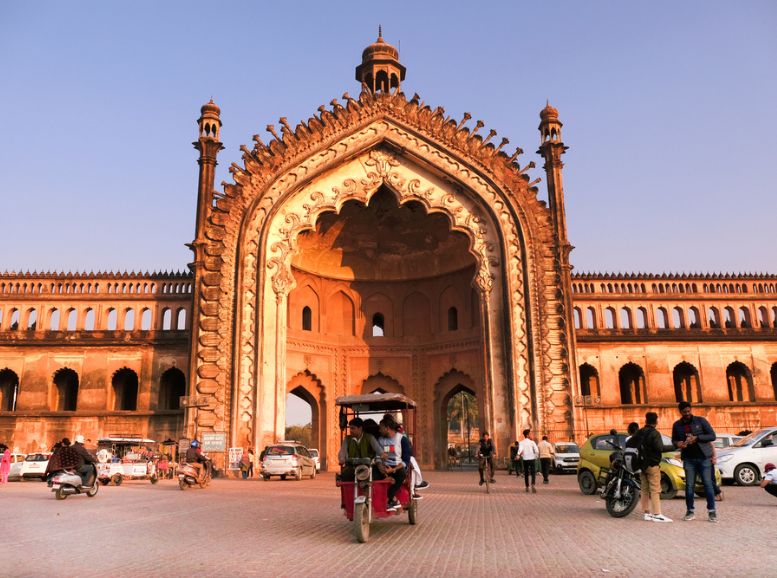
The Rumi Darwaza, an iconic gateway standing tall in the heart of Lucknow, serves as a symbol of the city’s architectural splendor and cultural richness. Built under the patronage of Nawab Asaf-ud-Daula in the 18th century, this majestic gateway showcases the grandeur of Awadhi architecture with its soaring arches, intricate carvings, and imposing height. The Rumi Darwaza stands as a testament to Lucknow’s storied past and serves as a welcoming beacon, inviting travelers to explore the enchanting landscapes and timeless heritage of the city.
Kanpur Zoo:

Kanpur Zoo, officially known as Allen Forest Zoo, is a prominent zoological park situated in Kanpur, Uttar Pradesh, India. Spanning over 77 hectares of lush greenery, the zoo is a haven for wildlife enthusiasts and nature lovers alike. Established in 1971, it is home to a diverse array of animal species, including mammals, birds, reptiles, and amphibians, housed in spacious and naturalistic enclosures. Visitors can explore the zoo’s various sections, which showcase animals from different regions of the world, such as the African Savannah, Indian Wetlands, and Australian Outback. One of the main attractions of Kanpur Zoo is its successful breeding programs for endangered species like the white Bengal tiger and Asiatic lion.
Bada Imambara Lucknow:

Bara Imambara, located in Lucknow, Uttar Pradesh, is an architectural marvel and a testament to the grandeur of the Nawabi era. Built in the 18th century by Nawab Asaf-ud-Daula, the fourth Nawab of Awadh, it serves as a shrine for Shia Muslims and a symbol of cultural heritage for the city. The complex includes several structures, with the main building being the Bara Imambara itself, featuring a massive central hall known as the ‘Bara Hall’ or ‘Asfi Mosque.’ What makes this edifice unique is that it was constructed without using any beams, arches, or pillars, making it one of the largest arched constructions in the world. The grand labyrinth known as the ‘Bhulbhulaiya’ within the Imambara is equally captivating, with its intricate maze of corridors and passages.
Jhansi:

Jhansi, located in the Indian state of Uttar Pradesh, is a city steeped in history and valor, known for its pivotal role in India’s struggle for independence. It is famously associated with the courageous Rani Lakshmibai, the Queen of Jhansi, who led her forces in the Indian Rebellion of 1857 against British rule. The city’s historic significance is evident in landmarks like the imposing Jhansi Fort, which stands as a symbol of resilience and resistance. Within its walls lies the Rani Mahal, the palace of Rani Lakshmibai, showcasing intricate architecture and historical artifacts. Jhansi is also home to various museums, including the Jhansi Museum and the Government Museum, which offer insights into the region’s rich cultural heritage.
Dudhwa National Park:
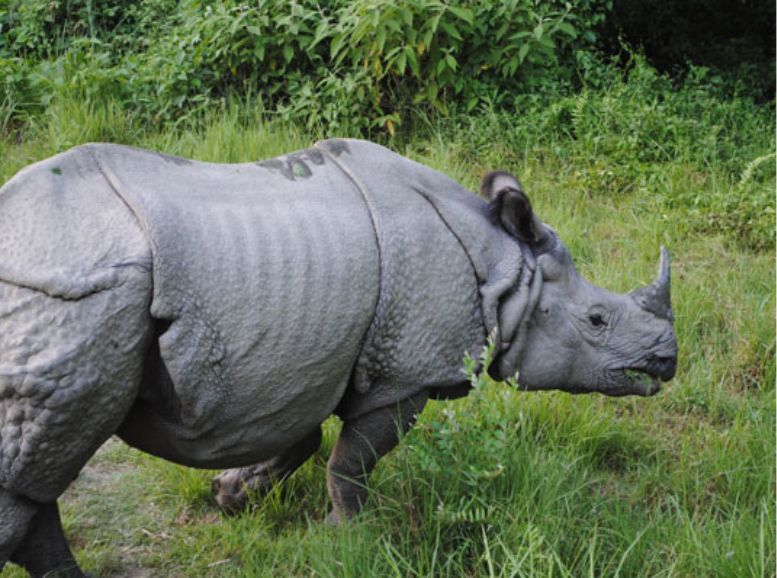
Dudhwa National Park, situated in the foothills of the Himalayas in the Indian state of Uttar Pradesh, is a haven for wildlife enthusiasts and nature lovers. This protected area is renowned for its rich biodiversity, encompassing dense forests, marshes, grasslands, and rivers. Dudhwa is particularly famous for its population of the majestic Bengal tigers, along with other rare and endangered species such as the Indian rhinoceros, swamp deer, and sloth bear. The park offers visitors the opportunity to embark on thrilling wildlife safaris, where they can witness these magnificent creatures in their natural habitat. Apart from its diverse fauna, Dudhwa is also home to a plethora of avian species, making it a paradise for birdwatchers. The tranquil surroundings of the park provide a serene retreat, ideal for nature walks and birdwatching excursions. With its untamed wilderness and breathtaking landscapes, Dudhwa National Park offers an unforgettable experience for those seeking to reconnect with nature and witness the wonders of the animal kingdom.
Chunar Fort (Mirzapur District):
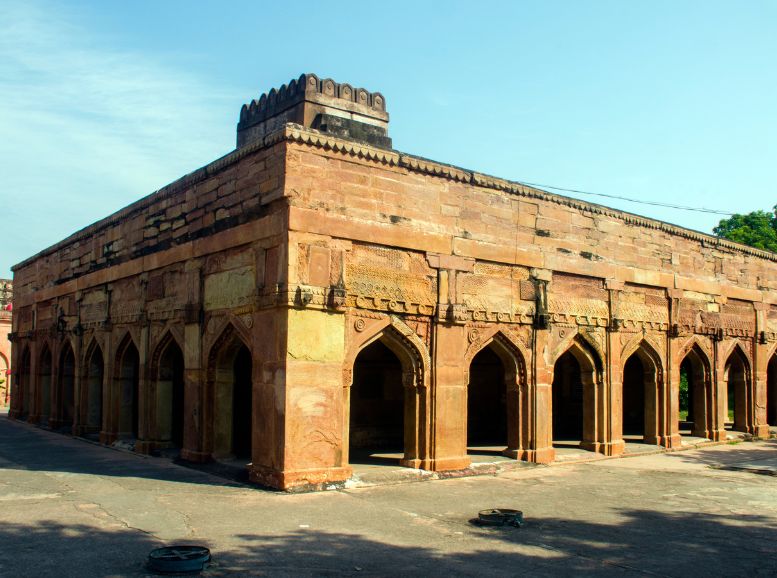
Chunar Fort, situated on the banks of the majestic Ganges River, stands as a testament to the rich tapestry of history that permeates Uttar Pradesh. Dating back to the Gupta period, this ancient fortress has witnessed the rise and fall of empires, serving as a strategic stronghold for rulers throughout the ages. Offering panoramic views of the river and surrounding landscapes, Chunar Fort beckons travelers to embark on a journey through time, exploring its labyrinthine passages, imposing battlements, and storied past.
Must try In Uttar Pradesh:
- Visit Historical Monuments: Explore iconic landmarks such as the Taj Mahal in Agra, Fatehpur Sikri, Agra Fort, and Akbar’s Tomb in Sikandra to delve into the rich history and architectural heritage of the region.
- Spiritual Pilgrimages: Embark on spiritual journeys to sacred cities like Varanasi, Allahabad (Prayagraj), Mathura, Vrindavan, Ayodhya, and Kushinagar, where you can participate in religious rituals, attend aarti ceremonies, and explore ancient temples and ghats along the Ganges River.
- Wildlife Safari: Experience the diverse wildlife of Uttar Pradesh by visiting national parks and wildlife sanctuaries such as Dudhwa National Park, Pilibhit Tiger Reserve, and Katarniaghat Wildlife Sanctuary, where you can spot tigers, elephants, leopards, and a variety of bird species.
- Boat Rides: Enjoy leisurely boat rides on the Ganges River in Varanasi or the Yamuna River in Mathura to witness the bustling ghats, ancient temples, and vibrant riverfront life.
- Cultural Festivals: Immerse yourself in the vibrant culture of Uttar Pradesh by attending festivals like the Kumbh Mela in Allahabad (Prayagraj), the Taj Mahotsav in Agra, and Holi celebrations in Mathura and Vrindavan.
- Culinary Exploration: Indulge in the diverse cuisine of Uttar Pradesh, known for its rich flavors and traditional delicacies such as kebabs, biryanis, chaats, and sweets like petha and peda. Don’t miss trying the famous street food of Lucknow, known as the ‘City of Nawabs’.
- Shopping: Explore local markets and bazaars in cities like Lucknow, Agra, and Varanasi to shop for handicrafts, textiles, jewelry, and souvenirs, including famous items like Chikan embroidery, marble handicrafts, and Banarasi silk sarees.
- Adventure Activities: Engage in adventure sports and activities such as paragliding, hot air ballooning, and river rafting in destinations like Rishikesh, Shivpuri, and Haridwar, located in the foothills of the Himalayas.
- Heritage Walks: Take guided heritage walks in cities like Lucknow, Agra, and Varanasi to explore hidden gems, ancient alleys, and historical neighborhoods while learning about the local culture and traditions.
- Attend Cultural Performances: Enjoy classical music and dance performances, folk music, and theater shows that showcase the rich cultural heritage of Uttar Pradesh at venues like the Bharat Bhavan in Lucknow and cultural festivals across the state.
Beyond Sightseeing:
The vibrant state offers unique experiences:

- Village Homestays: Immerse in local culture with a stay in a traditional village home.
- Yoga Retreats in Rishikesh: Rejuvenate your mind and body with authentic yoga retreats.
Local Experiences:
- Banarasi Silk Saree Weaving: Witness the intricate art of Banarasi saree making.
- Agra Petha Making Workshop: Indulge in a sweet experience by learning to make the famous Agra Petha.
- Street Food Exploration in Varanasi: Immerse in the chaotic charm of Varanasi’s street food scene.
- Cooking Demonstration in Mathura: Learn the art of preparing traditional dishes from the locals.
Foodie Delights:
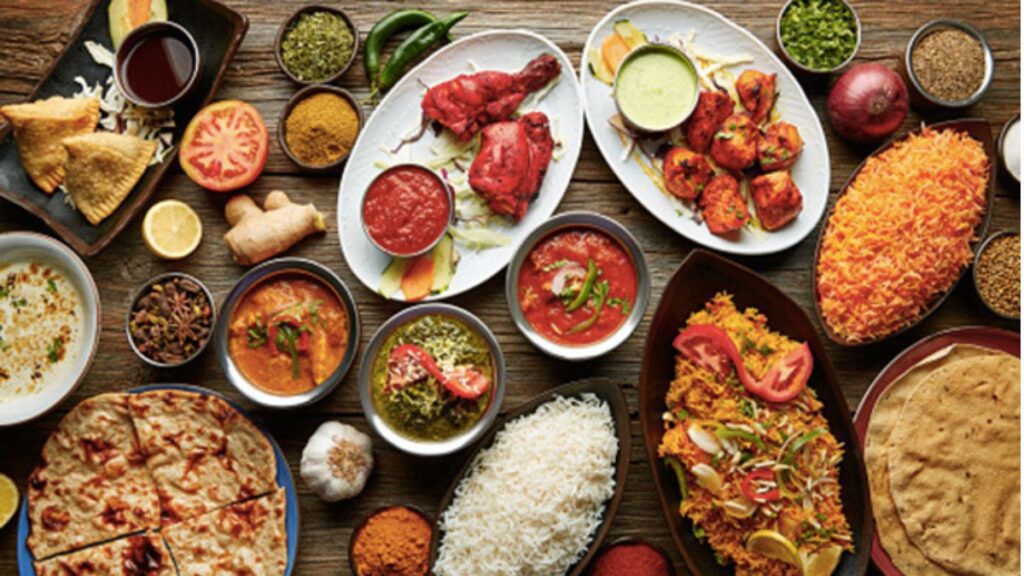
Uttar Pradesh’s culinary specialties include delectable kebabs, biryanis, and sweet delights like jalebi and peth
Best Picks:
- Tunday Kababi in Lucknow: Savor the melt-in-the-mouth kebabs.
- Petha in Agra: Try the famous sweet made from ash gourd.
Travel Tips:
Transportation: Option for trains for a comfortable and scenic journey. Rickshaws and taxis are convenient for local travel, and car rentals provide flexibility for families.
Budgeting: Explore budget-friendly options like homestays and street food. Allocate budget for historical site entry fees and adventure activities.
Packing Essentials: Pack comfortable shoes for exploring historical sites, modest clothing for religious places, and essentials for adventure activities.
Safety Considerations: Ensure drinking bottled water, and follow hygiene practices. Stay cautious in crowded areas.
Options for Different Travelers: Solo travelers can delve into spiritual experiences, families can enjoy historical marvels, and friends can embark on adventure activities.
Conclusion:
In wrapping up our exploration of Uttar Pradesh, we’ve uncovered a tapestry rich in history, spirituality, and adventure. The state’s charm invites all types of travelers, promising a diverse and enriching experience. As you plan your own adventure, recall the wise words of a seasoned traveler, “Travel makes one modest. You see what a tiny place you occupy in the world.” All the best from xplro.com as you embark on your exploration of the incredible Uttar Pradesh!
FAQs on Uttar Pradesh Travel Guide:
1. What are the absolute must-see places in Uttar Pradesh?
Uttar Pradesh offers a diverse experience, from historical wonders like the Taj Mahal to spiritual centers like Varanasi. Must-sees include Agra, Lucknow, Varanasi, Mathura, Vrindavan, Sarnath, and Dudhwa National Park, but the list can vary depending on your interests.
2. What’s the best time to visit Uttar Pradesh?
The ideal time depends on your preferences. October to March offers pleasant weather and coincides with major festivals, but it’s peak season. April-May sees fewer crowds and potentially better deals, but it can be warm. The monsoon (July-September) offers lush greenery and lower prices, but comes with rain disruptions.
3. Is Uttar Pradesh safe for tourists?
Like any travel destination, exercising caution and common sense is crucial. Research safe areas, stay vigilant, and dress modestly at religious sites. It’s always wise to consult the latest travel advisories for specific updates.
4. What kind of visa do I need to visit Uttar Pradesh (India)?
Visa requirements vary depending on your nationality. Check with the Indian embassy or consulate in your home country for the latest information and application process.
5. How do I get around Uttar Pradesh?
Uttar Pradesh boasts a well-connected network of trains, buses, and taxis. Trains are a cost-effective option, while taxis offer more flexibility. Rickshaws are readily available in major cities for short distances. Consider pre-booking taxis or using ride-hailing apps for convenience, especially in smaller towns.
6. What are some local dishes I must try in Uttar Pradesh?
Uttar Pradesh is known for its rich Awadhi cuisine. Sample kebabs, biryani, shahi tukda (bread pudding), and samosas. Don’t miss local street food like chaat and kachori. Vegetarians have plenty of options, including paneer dishes and dal makhani.
7. What kind of clothing should I pack for Uttar Pradesh?
Pack light, breathable clothing for most of the year. Opt for cotton or linen during the warmer months (April-June) and pack layers for the cooler months (October-March). If visiting religious sites, cover your shoulders and knees.
8. What are some cultural sensitivities to be aware of in Uttar Pradesh?
Removing shoes before entering temples and mosques is respectful. Dress modestly, especially in religious places. Public displays of affection are generally not encouraged. Be mindful of local customs and traditions.
9. What are some hidden gems in Uttar Pradesh beyond the usual tourist spots?
Explore the ancient city of Kannauj, known for its perfume industry. Visit the bird sanctuary at Nawabganj. Hike in the scenic beauty of Sohag Barwa Wildlife Sanctuary. Immerse yourself in the rich cultural heritage of Bareilly, famous for Zardozi embroidery.
10. Is bargaining expected in Uttar Pradesh?
Bargaining is common in street markets and with independent vendors. Do so politely and respectfully, keeping in mind that prices are often lower than initially quoted. However, it’s not expected at established shops or restaurants.
11. Do I need to tip in Uttar Pradesh?
Tipping is not mandatory but appreciated, especially for good service. Tipping staff at restaurants, guides, and porters is customary. A small tip (around 10%) is considered appropriate.
12. Can I use my credit card in Uttar Pradesh?
Credit cards are widely accepted in major cities and tourist areas. However, it’s always good to carry some cash for smaller towns, street vendors, and public transportation.
13. What language is spoken in Uttar Pradesh?
Hindi is the official language, but English is understood in tourist areas and major cities. Learning a few basic Hindi phrases can enhance your experience and show respect for the local culture.
14. Is it safe to drink the tap water in Uttar Pradesh?
It’s generally not recommended to drink tap water due to potential contamination. Opt for bottled water or purified water. Avoid using tap water for brushing your teeth or making ice.
15. What festivals are celebrated in Uttar Pradesh?
Uttar Pradesh is a land of vibrant festivals. Diwali, the festival of lights, is widely celebrated. Holi, the festival of colors, is a joyous celebration. Other notable festivals include Dussehra, Eid, and Maha Shivratri.




